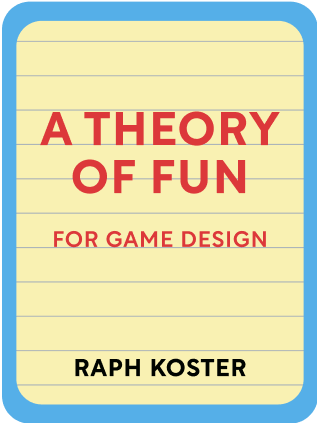

This article is an excerpt from the Shortform book guide to "A Theory of Fun for Game Design" by Raph Koster. Shortform has the world's best summaries and analyses of books you should be reading.
Like this article? Sign up for a free trial here .
Are games art? Are games stories? Or are games metaphors? Can they be all three, and why does it matter?
Game designer and author of A Theory of Fun for Game Design, Raph Koster, delves into these questions in his book. Koster wants to legitimize gaming because of the potential benefits games could have on society.
Keep reading for Koster’s opinion on games’ role in society.
Games as an Artform
Are games art? This question is often pondered by gamers and critics, hoping to legitimize gaming.
Consider these definitions. Simple entertainment provides comforting, simplistic information. In contrast, art provides challenging information that you have to think about to absorb. The author argues that games certainly fulfill this criterion.
Many people have tried to classify games as art based on the following factors: their degree of interactivity, their level of fun; their formality of rules or systems. The author rejects these as missing the point.
All media go through a transition period where they’re seen as frivolous indulgences:
- Paintings were criticized for robbing reality of its essence.
- Novels were considered gothic nonsense for housewives.
- Film began as trashy kinetoscopes at penny arcades.
- Jazz was seen as devil music leading young people astray.
Media also go through Apollonian and Dionysian periods—the former is about developing the medium as a medium; the latter is about what could be said with that medium. A new medium matures with time as people continue to explore what the medium can communicate.
If games are to follow the pattern of history, they’re certain to be taken seriously as art sometime in the future.
Differences Between Games and Stories
Games feature stories, but the author argues that games and stories are different:
- Games tend to teach by direct experience. Stories teach vicariously through the experiences of others.
- Games objectify, quantify, and classify—they are rigid. Stories blur, deepen, and are good at empathy—they feel softer and more nuanced.
- Games are external—about people’s actions. Stories are internal—about people’s emotions and thoughts.
- Games generate player narratives. Stories provide a narrative to the audience.
Other points about stories:
- Some weaker games are more narrative than game. They’re the equivalent of asking the player to solve a crossword puzzle to turn the next page of the novel.
- Often games have stories that reflect the core themes of the game. Since many games tend to be about power and control, the stories tend to be juvenile.
- Often stories are merely used to give positive feedback to the player.
Games cannot convey the same breadth that literature can, but they provide greater richness, complexity, and interactivity.
Instead of trying to think about whether games can feature stories, invert the question—can we make stories fun the way games can be? Unlike a static paperback, these fun stories would need to be interactive and give fast feedback.
The Dressing on Games
Many games are more than just abstract rules—there is more “window dressing” on them. Games may feature characters, a story, and images.
Games use these fictional metaphors to add variations to an underlying game. However, the metaphor is often ignored by players to focus on the underlying pattern.
- For example, checkers has a metaphor of royalty: there is a “king me” move, and the pieces have crowns.
- But games are largely about getting people to see past the superficial variations to understand the underlying patterns. Hence the author says, “gamers are good at seeing past fiction.”
The best test of a game’s fun is playing with no graphics, music, sound, or story. If this is fun, then all the dressing will amplify the fun. If it’s not fun, then no amount of dressing will make it fun.
This is why gamers disagree with criticism of games as teaching bad values or having gratuitous violence. In the game Grand Theft Auto, gamers don’t see the action as “run over a prostitute,” they see “get a powerup.”
But the author argues that the visual representation and metaphor are still part of the experience.
- A game where you throw contorted humans down a pit, and they eat each other when you form a line, is like Tetris, but the experience is different.
- This is similar to how we consider dance to be choreography plus costuming plus narrative. Or that Picasso’s Guernica as a painting would be perceived differently if it weren’t about Guernica.
A mismatch between the core of the game and the dressing can result in problematic conflicts. For example, an aiming-shooting game about social cohesion would be confusing.
So game designers have a responsibility, like all media creators, to avoid transgressing social boundaries.

———End of Preview———
Like what you just read? Read the rest of the world's best book summary and analysis of Raph Koster's "A Theory of Fun for Game Design" at Shortform .
Here's what you'll find in our full A Theory of Fun for Game Design summary :
- What makes games fun
- Why it's important for games to have a learning component
- Whether or not games should be considered art






